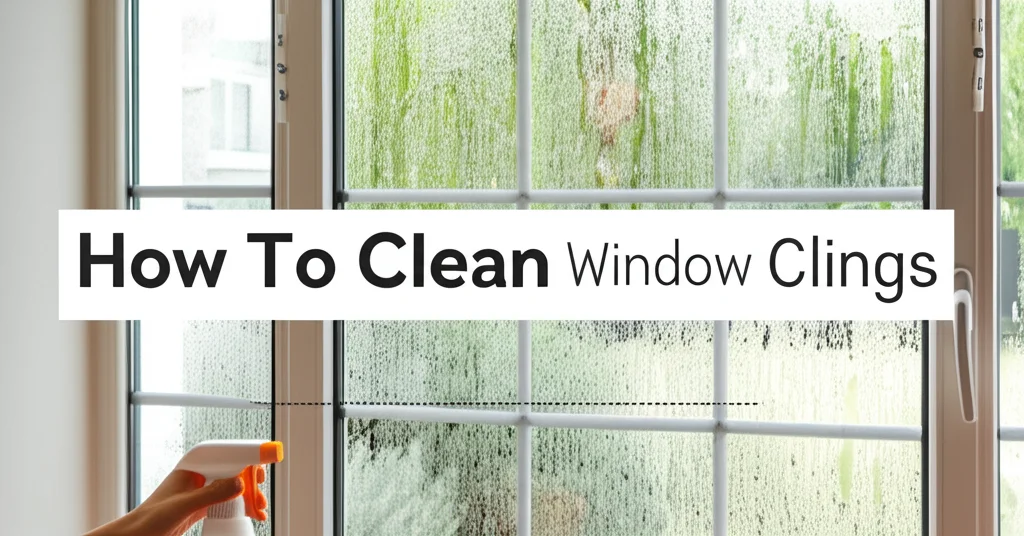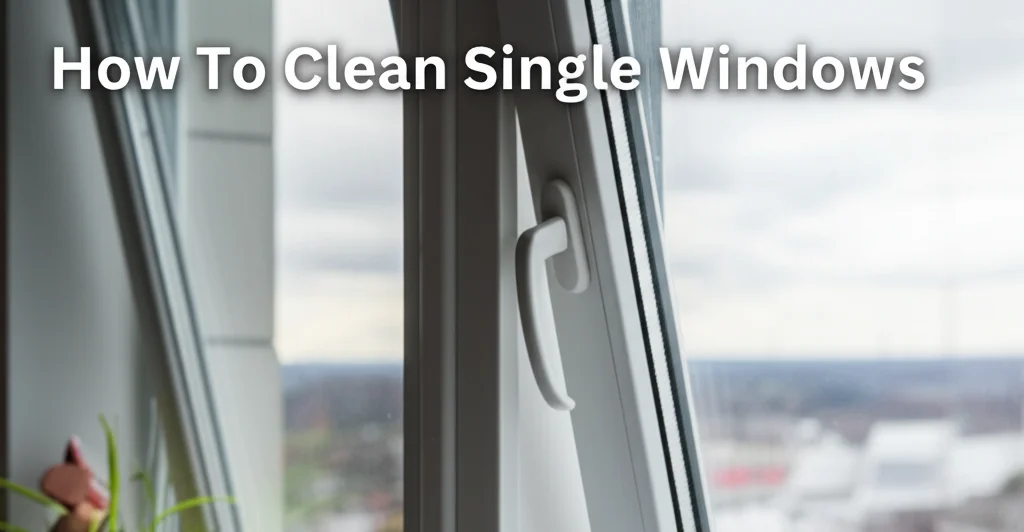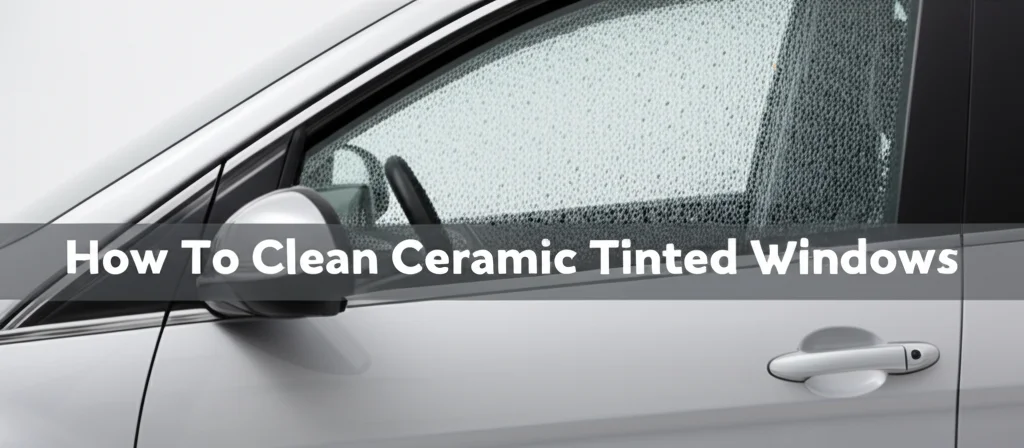· Home Cleaning · 6 min read
How To Clean Window Clings

Sparkling Clean: How To Clean Window Clings
Have you ever wondered how to keep those festive or decorative window clings looking their best? Window clings add a cheerful touch to any home, especially during holidays. But dust, dirt, and even sticky residue can quickly dull their shine. Cleaning window clings doesn’t have to be a chore. This article will guide you through the best methods for cleaning window clings, ensuring they stay vibrant and adhere properly. We’ll cover everything from gentle cleaning solutions to removing stubborn residue, so your window decorations always look fresh.
Quick Answer: To clean window clings, gently wipe them with a soft, damp cloth and mild dish soap. For stubborn residue, use a bit of rubbing alcohol on a cotton swab. Avoid abrasive cleaners that can damage the cling’s surface.
Takeaway:
- Use gentle cleaning solutions.
- Avoid abrasive materials.
- Dry thoroughly before reapplying.
Why Cleaning Window Clings Matters
It’s easy to overlook cleaning window clings, but regular maintenance is important. Over time, dust and grime accumulate, making the clings appear cloudy and less vibrant. This buildup can also weaken the adhesive, causing them to peel or fall off. Cleaning not only restores their appearance but also extends their lifespan. Plus, a clean surface ensures a stronger bond when you reapply them.
Think of it like this: a clean cling is a happy cling! Keeping them clean prevents damage and ensures they continue to brighten your windows for years to come. Don’t let a little dirt ruin your festive display.
Gathering Your Cleaning Supplies
Before you start, gather the necessary supplies. You won’t need anything fancy – most items are likely already in your home. Having everything ready will make the cleaning process quick and efficient. Here’s what you’ll need:
- Soft Microfiber Cloths: These are gentle and won’t scratch the cling’s surface.
- Mild Dish Soap: A few drops mixed with water create a safe cleaning solution.
- Warm Water: Essential for rinsing and diluting the soap.
- Rubbing Alcohol (Isopropyl Alcohol): For tackling stubborn residue.
- Cotton Swabs: Perfect for precise application of rubbing alcohol.
- Spray Bottle (Optional): For easy application of the cleaning solution.
You might also find a plastic scraper helpful for gently lifting stubborn debris. Remember, the key is to use gentle tools and solutions to avoid damaging your window clings.
The Gentle Cleaning Method: Soap and Water
This is the go-to method for routine cleaning. It’s safe, effective, and requires minimal effort. Start by mixing a few drops of mild dish soap with warm water in a bowl or spray bottle. Gently dampen a microfiber cloth with the soapy water.
Wipe the window cling in a circular motion, being careful not to apply too much pressure. Rinse the cloth with clean water and wipe the cling again to remove any soap residue. Finally, dry the cling with a clean, dry microfiber cloth. This method is perfect for removing dust, fingerprints, and light grime. It’s a simple way to keep your clings looking their best.
Tackling Stubborn Residue with Rubbing Alcohol
Sometimes, soap and water aren’t enough. If you encounter sticky residue or stubborn grime, rubbing alcohol is your friend. Dip a cotton swab into rubbing alcohol. Gently dab the alcohol onto the residue, allowing it to sit for a few seconds to loosen the grime.
Avoid soaking the cling, as excessive alcohol can potentially damage the material. Use a clean part of the cotton swab to wipe away the loosened residue. Repeat as needed until the cling is clean. This method is particularly effective for removing adhesive residue left behind from previous applications. If you’re concerned about the alcohol’s effect, test it on a small, inconspicuous area first.
Cleaning Different Types of Window Clings
Not all window clings are created equal. Different materials may require slightly different cleaning approaches. Here’s a breakdown:
- Vinyl Clings: These are the most common type and are generally durable. The soap and water method works well for vinyl.
- Static Clings: These rely on static electricity to adhere. Avoid using alcohol on static clings, as it can reduce their static charge. Stick to gentle soap and water.
- Glitter Clings: Glitter clings can be delicate. Use a very soft cloth and avoid scrubbing, as this can remove the glitter.
- Fabric Clings: These are less common but require extra care. Hand wash with a mild detergent and air dry.
Knowing the material of your window clings will help you choose the most appropriate cleaning method. Always err on the side of caution and start with the gentlest approach.
Preventing Future Dirt Buildup
Prevention is always better than cure! Here are a few tips to minimize dirt buildup on your window clings:
- Clean Windows First: Before applying clings, ensure your windows are thoroughly cleaned. This provides a clean surface for better adhesion and reduces the amount of dirt that clings to the decorations. You can find more information on cleaning windows here.
- Regular Dusting: Dust your windows and clings regularly with a microfiber cloth.
- Avoid Harsh Chemicals: When cleaning near window clings, avoid using harsh chemicals that could damage them.
- Proper Storage: When storing window clings, keep them in a clean, dry place to prevent dust and grime from accumulating.
Taking these preventative measures will significantly reduce the frequency of deep cleaning and keep your window clings looking their best. A little effort goes a long way in maintaining their sparkle.
FAQ: Your Window Cling Cleaning Questions Answered
Q: Can I use glass cleaner on window clings?
A: While some glass cleaners are safe, many contain harsh chemicals that can damage the cling’s surface. It’s best to stick to mild dish soap and water or rubbing alcohol for residue.
Q: How do I remove a window cling that’s been on for a long time?
A: Gently warm the cling with a hairdryer on a low setting. This will soften the adhesive, making it easier to peel off. If residue remains, use rubbing alcohol.
Q: Will rubbing alcohol damage my window?
A: Rubbing alcohol is generally safe for glass, but avoid prolonged contact. Wipe away any excess alcohol immediately.
Q: Can I reuse window clings after cleaning them?
A: Yes, most window clings can be reused multiple times. Ensure they are completely dry before reapplying. However, the adhesive may weaken over time.
Q: What’s the best way to clean large window clings?
A: Use a spray bottle with your cleaning solution and a large microfiber cloth. Work in sections, rinsing and drying as you go.
Conclusion: Keep Your Windows Sparkling!
Cleaning window clings is a simple process that can significantly enhance the look of your home. By using gentle cleaning solutions and following the tips outlined in this guide, you can keep your clings looking vibrant and new for years to come. Remember to choose the appropriate cleaning method based on the type of cling and always test solutions in an inconspicuous area first. Don’t let dust and grime dim your festive spirit! Now that you know [how to clean window clings], go ahead and give your windows a sparkling makeover. For more cleaning tips and tricks, explore our other articles on Beacleaner.com.




